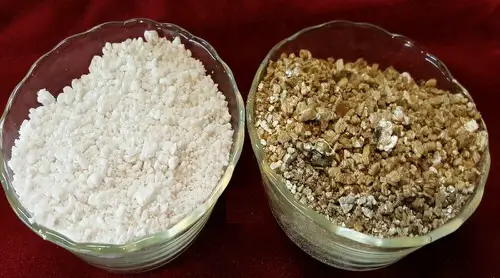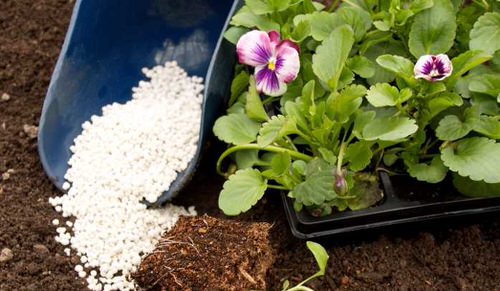Confused about Perlite Vs Vermiculite: Which One to Choose? Read on to know all their basic differences and pick the best one according to your requirement!

It is very important to understand what goes into the potting mix before you pick it for your plants. Choosing the wrong growing medium can impact a plant’s growth severely and picking up the right one will make it flourish for a long time to come. Let’s have a detailed look at Perlite Vs Vermiculite: Which One to Choose?
Here are the best soil tests that you can perform easily at your home
What is Perlite?

Also popularly known as volcanic popcorn, perlite is derived from the volcanic glass after heating it to a very high temperature. Once it reaches the optimum temperature, it forms or “pops” little white balls that we commonly know as perlite.
The main quality of perlite is its water-shedding capability while retaining the much-needed moisture, which makes it one of the best ingredients in a potting mix. It has a pH value of 6.6-7.5.
What is Vermiculite?

Scientifically, it is a group of hydrated magnesium, iron, aluminum silicate, and a naturally occurring mineral. When these are heated, they expand and create granules that we commonly know as vermiculite.
Vermiculite can soak up to 3-4 times its volume in water and also attracts plant nutrients like magnesium, calcium, potassium, and phosphorous. It also has a better water retention capacity as compared to perlite and acts more like a sponge, holding more amount of water when compared to Perlite. Though it offers less aeration for the plant roots.
Check out our Beginner’s Guide on Buying Houseplants here!
Perlite Vs Vermiculite
| Perlite | Vermiculite | |
|---|---|---|
| Ideal for seed starting
Good for Blending into Potting soil medium |
Yes | Yes |
| Organic Gardening Approved | Yes | Yes |
| Loosening Capacity | Best | Good |
| Drainage Capacity | Best | Good |
| Nutrients and Moisture Retention | Good | Best |
| pH Value | 7.0 to 7.5 | 7.0 to 7.5 |
| Decomposition | No | No |
Perlite Vs Vermiculite: Which One to Choose?

There is a huge discussion amongst the gardeners all across the world on Perlite Vs Vermiculite: Which One to Choose. Let’s have a look at it in detail.
When to Use Perlite?
- You need perfect aeration and drying up of the soil
- You want to loosen up heavy clay soil
- While growing houseplants that like to stay on a dry side
- If you live in a humid climate and want to keep the soil less waterlogged
Perlite can remove puddles, surface crusting and also helps in reducing soil temperature fluctuations while improving aeration and drainage. It is also an amazing choice while growing succulents and cacti.
Perlite Alternatives:
Depending on the type of plants you are using, you can also use Bark, Rice husks,
Pumice, Peat, Sand, Coir, Calcined clay, Horticultural grit, and Granite gravel. These are the most common substitutes for perlite.
When to Use Vermiculite?
- At the time of starting seeds and seedlings
- For potting outdoor plants
- If you live in a hot and dry climate
Vermiculite is good for plants that love moisture such as rainforest houseplants like philodendron, and pothos, and even ferns. It is also advisable to use it if you are unable to water the plants as regularly as you need to.
Vermiculite Alternatives:
As Vermiculite can be expensive, you can also use Coir, Peat, Sawdust, Wood Chips, and Shredded bark. These are the most common substitutes for vermiculite.
The Bottom Line

The crux of the discussion boils down to two of the most important factors:
- If you are looking forward to having better aeration and drainage for your plants—use perlite.
- If you want more moisture retention—use vermiculite.


